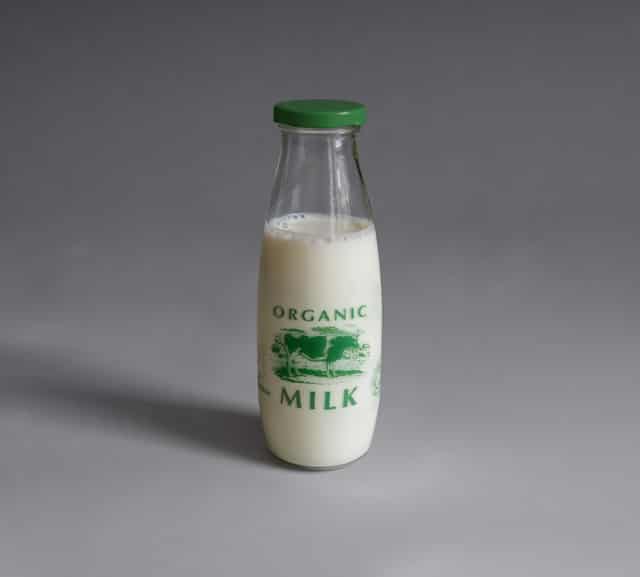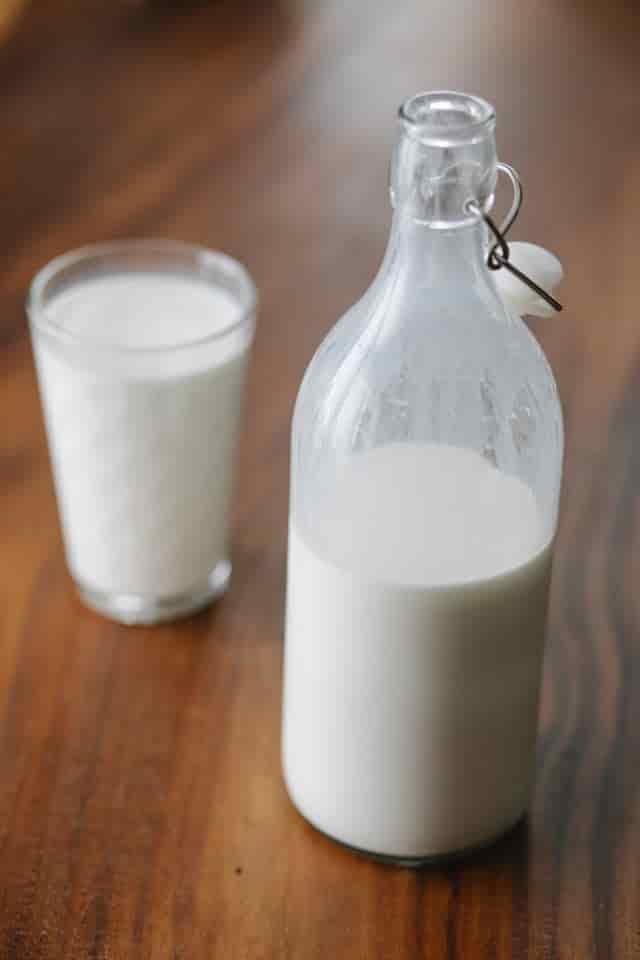ORGANIC DRINKS
MILK
Milk can be described as a white liquid that is produced by mammals to feed their newborns (1). FAO/WHO Codex Alimentarius Commission describes milk as a substrate, whether raw, processed, or semi-processed, that is meant for human consumption. Mankind has a long history of taking animal milk, with cow’s milk being the most popular type globally (1).
For millennia, milk has been an integral part of human meals, offering vital nutrients and acting as a flexible component in a myriad of culinary recipes. From childhood to maturity, milk is essential to our general health and well-being. Milk can be consumed in a variety of ways; it can be used as a base for creamy soups and sauces, or it can be poured over your cereal in the morning or savored in a glass with cookies.
It is a versatile and nutritious beverage. This comprehensive guide covers a wide range of topics, including the benefits of milk, its various types, how to select the finest kind for your needs and much more.

The nutritional benefits of milk
Milk is well known for having a high nutritional content, which makes it a great source of essential proteins, vitamins, and minerals. Milk is a nutritional powerhouse that supports the development and maintenance of strong bones and teeth since it is full of calcium, vitamin D, potassium, and phosphorus.
Furthermore, vitamins A and B12, which are essential for maintaining healthy skin, eyes, and neurological function, are naturally present in milk. Milk is a perfect beverage for people of all ages because of its amazing range of nutrients.
Different types of milk
In recent times, the availability of milk alternatives has expanded significantly, providing a range of options for individuals with dietary preferences or restrictions.
Conventional and organic milk
According to experts, organic milk is mainly produced based on organic objectives and principles including naturalness, as well as nutrient recycling (1). Organic milk is produced from cows that are raised on organic farms.

By adhering to the stringent regulations established by organic certification organizations, these farms guarantee that milk is produced in a sustainable and eco-friendly manner. The cows are not subjected to industrial pesticides or genetically modified organisms (GMOs) because they are fed organic feed. As a result, the milk product is healthier and more natural.
On the other hand, conventional milk products are produced from livestock that are usually treated with growth hormones and antibiotics. Conventional milk is generally produced on large-scale farms where cows are housed in cramped quarters and fed a diet that may contain synthetic chemicals and genetically modified organisms.
Animal-based milk
Whereas cow’s milk remains the most popular and widely consumed type, there are presently other animal-based milk with different nutritional profiles and characteristics.

- Cow’s milk: Cow’s milk is available in different forms, including skim milk (fat-free), reduced-fat (2%), low-fat (1%), and whole milk (full-fat). Cow’s milk is a good source of calcium, protein, and vitamin D (2).
- Goat’s Milk: Goat’s milk is similar in nutrient composition to cow’s milk but has smaller fat globules, making it easier to digest for some people who are sensitive to cow’s milk.
- Sheep’s Milk: Sheep’s milk is creamier than cow’s milk and has a higher fat content. It’s commonly used to make cheeses like feta and Roquefort.
- Buffalo Milk: Buffalo milk is popular in some parts of the world, particularly in South Asia. It has a higher fat and protein content compared to cow’s milk.
Plant-based milk
These milk are produced from different plant sources and are suitable for individuals who are lactose intolerant or follow a vegan diet. Common types include:

- Almond Milk: Made from ground almonds and water, it has a nutty flavor and is low in calories. Almond milk is a well-liked option for people looking for something lighter because it is naturally low in fat and calories.
- Soy Milk: Made from soybeans, it is high in protein and often fortified with vitamins and minerals. soy milk is rich in protein and is a suitable alternative for those with lactose intolerance or dairy allergies.
- Oat Milk: Made from oats, it has a creamy texture and is often fortified with nutrients.
- Coconut Milk: Made from the flesh of coconuts, it has a rich, creamy texture and a distinct coconut flavor.
- Cashew Milk: Made from cashew nuts and water, it has a creamy texture and a slightly sweet flavor.
- Rice Milk: Made from milled rice and water, it has a mild flavor but is lower in protein compared to other plant-based milks.
Lactose-Free Milk
This type of milk is treated with the enzyme lactase to break down lactose, making it easier to digest for people who are lactose intolerant.

A2 Milk
A2 milk comes from cows that produce milk with only the A2 beta-casein protein, as opposed to the A1 protein found in most cow’s milk. Some people believe that A2 milk is easier to digest, although scientific evidence supporting this claim is limited.
When choosing a type of milk, it is important to consider your dietary needs, taste preferences, any potential allergies or intolerances, as well as potential health benefits.
Is organic milk worth the price?
The increased cost of organic milk in comparison to conventional milk is a prevalent worry. Although the cost of organic milk may be higher, many consumers feel that the advantages outweigh the price.
The stringent regulations and farming methods used in organic milk production contribute to a more sustainable and environmentally friendly product. Furthermore, organic milk has a lot of health benefits because it doesn’t contain growth hormones or antibiotics.
Buying organic milk ultimately boils down to individual priorities and ideals. If you prioritize supporting sustainable farming practices, animal welfare, and your own health, then organic milk may be worth the price.
Choosing the best milk for your needs
Selecting the right milk for your needs can seem complicated with so many varieties available. Nevertheless, considering a few key factors can help simplify the decision-making process.

First and foremost, it is essential to determine any dietary restrictions or allergies you may have. It would be better to choose a non-dairy option, such as almond or soy milk if you have a dairy allergy or are lactose intolerant.
Next, think about the milk’s intended usage and your taste preferences. Which do you prefer – a lighter alternative like skim milk or the creamy smoothness of whole milk? Will you be using it for baking or cooking?
Will you be using it for baking or cooking? Your answers to these questions will direct you toward the kind of milk that best suits your needs.
And lastly, consider the milk’s nutritional value. For those seeking a high-calcium solution, fortified plant-based milk or cow’s milk might be the best bet. By considering these factors, you can confidently select the milk that aligns with your dietary requirements and personal preferences.
The health benefits of milk
Milk is often associated with promoting strong teeth and bones, and for good reason. Milk is vital for maintaining a healthy level of bone density because of its high calcium concentration, particularly in childhood and adolescence when bone growth is at its highest.
In addition, milk contains vitamin D, which aids in the absorption and utilization of calcium, further enhancing its bone-strengthening benefits.
Milk has been connected to several other health advantages besides bone health. Milk is a great post-workout recovery drink because it contains proteins that help with muscle growth and repair.
Moreover, probiotics present in milk help to maintain a healthy gut, which improves digestion and gastrointestinal health in general. You can get all these health advantages and improve your general health by including milk in your regular diet.
Milk allergies and lactose intolerance: Understanding the differences
Although milk has many nutritional advantages, some people may experience negative reactions to it. Two prevalent conditions that might impact an individual’s ability to consume dairy products are milk allergies and lactose intolerance.
A milk allergy is an immunological reaction brought on by the proteins in cow’s milk that cause symptoms like vomiting, rashes, and trouble breathing. Conversely, lactose intolerance is a disorder where the body is unable to break down the sugar lactose, which is present in milk because it lacks the enzyme lactase.
Symptoms of lactose intolerance include bloating, diarrhea, and stomach cramps. It’s critical to distinguish between the two conditions and to get the right medical attention if you think you could be allergic to or intolerant to milk.
The controversy surrounding milk: Is it really healthy?
Milk consumption has been the subject of discussions and controversies in the health and wellness community in recent years.
Some contend that milk provides essential nutrients that are difficult to obtain from other sources, making it a necessary component of a balanced diet. They emphasize how important it is for overall nutrition, muscle growth, and bone health.

Some, on the other hand, contest the health benefits of milk, raising issues with hormones and antibiotics found in conventionally produced milk as well as possible environmental effects.
It’s critical to weigh the arguments on both sides of the issue and base your judgments on milk consumption on your own situation and values. Making decisions that support your values and health objectives can be made easier if you keep up with credible research and seek advice from medical specialists as you navigate the controversy.
How to incorporate milk into your diet: Recipes and tips
Including milk in your diet on a regular basis can be a tasty and nourishing experience. Milk can be used to make a variety of savory foods, such as creamy pastas and soups, as well as traditional milkshakes and smoothies.
Start your day off right with a nutritious and satisfying bowl of overnight oats, made by soaking oats in milk overnight and topping them with your favorite fruits and nuts in the morning.
Make a homemade smoothie by blending milk, fresh berries, and a small amount of honey for a refreshing treat. Additionally, milk can be the foundation for velvety mashed potatoes, soothing macaroni and cheese, and creamy salad dressings.
You can get the nutritional advantages of milk while also giving your meals a little extra richness and flavor by experimenting with recipes and using them in different ways.
Buying and storing milk
When it comes to buying and storing milk, a few guidelines can help ensure its freshness and safety. Check the expiration date and choose the milk that has the longest shelf life when making your purchase.
Opt for milk that has been stored in a refrigerated section and is properly sealed to maintain its quality. To keep the milk from spoiling, keep it in the refrigerator as soon as you get home, keeping the temperature below 40°F (4°C).

It is vital to remember that milk should not be kept inside the refrigerator door since the temperature there varies considerably. To extend the shelf life of milk, consider freezing it in small portions if you do not plan to consume it immediately.
Proper storage and handling of milk will ensure that it remains fresh and safe to consume.
Conclusion
To sum up, milk is a versatile and essential food that has several advantages for our general health. Milk has earned its place as a mainstay in our diets with its rich nutritional profile, which supports bone health and muscle growth, as well as its role in fostering a healthy gut and aiding in digestion.
We learned how important it is to choose the milk that best suits our needs as we examined the various varieties available. When choosing between traditional cow’s milk and plant-based alternatives, it’s important to take taste preferences, dietary requirements, and nutritional value into account.
We can discover the mysteries of milk and continue to reap its health advantages for years to come by adding it to our regular meals and experimenting with its culinary uses.
References
- Widyastuti Y, Febrisiantosa A. Milk and different types of milk products. Advances in Food Science and Nutrition. 2013 Nov 27:49-68.
- Katz AC. Milk nutrition and perceptions. Johnson & Wales University. 2018 Apr;29.